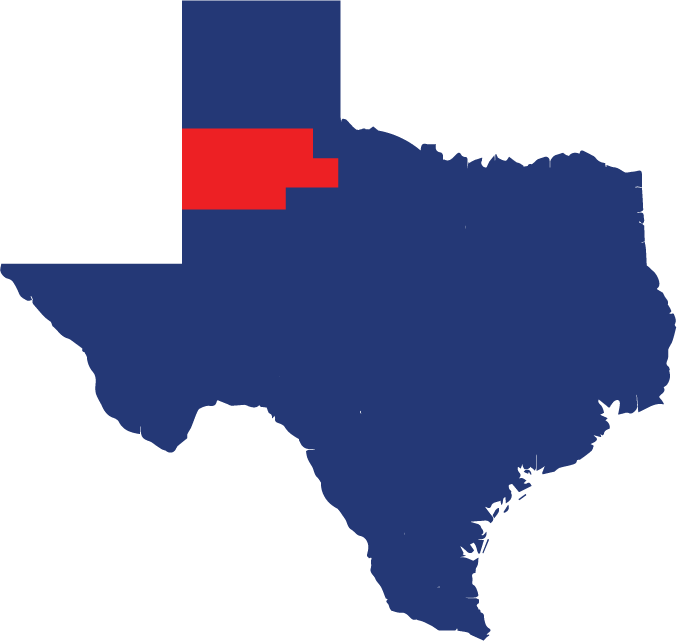About SPAG
The South Plains Association of Governments (SPAG) is an independent political subdivision of the state of Texas, or Council of Governments (COG), and is an instrument of local governments. It is one of 24 such organizations in Texas.
The SPAG planning region, delineated by the Governor, encompasses 15 counties covering 13,737 square miles. Approximately 60 percent of the region’s population is located in Lubbock County, which is the geographical center of the region.
SPAG is charged with representing the interests of the local governments in the region and facilitating orderly development of the economic, social, and physical environment. Acting through SPAG, local governments create opportunities based upon local needs and preferences.
By the Numbers
15
420,659
4.7
Geography
The SPAG region consists of the West Texas Rolling Plains, which is approximately the western two-thirds of the North Central Plains in Texas (purple region), and The South Plains geographical regions (orange region). In a direction of east to west, the altitude increases approximately from 750 feet to 2,000 feet beginning at the base of the Caprock Escarpment.

Economic Development Goals
Goal 1: Increase the quality of the workforce in the south plains region.
Goal 2: Generate an increasing level of per capita income rates for residents within the region.
Goal 3: Design and implement a commercial development campaign that effectively promotes and utilizes the region’s cultural and retail sectors and ultimately attract visitors (shoppers and tourists) from outside the region.
Goal 4: Attract well-established businesses to relocate or branch into the region and entice new businesses to expand into the region.
Goal 5: Enhance and expand the economic environments ability to aid small businesses especially those located in the rural areas to flourish.
Goal 6: Coordinate the promotion of the region and support public relation efforts of local chambers, economic development organizations, and private utilities.
Goal 7: Increase the quality of living for regional citizens, by encouraging the development of safe and adequate housing, consistent with the real estate market.
Goal 8: Increase the comprehensive educational attainment rates within the region.
Goal 9: Maintain and improve the CEDS ongoing planning and management process.
